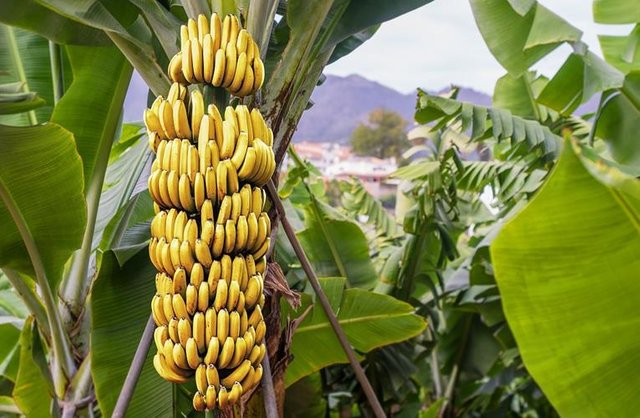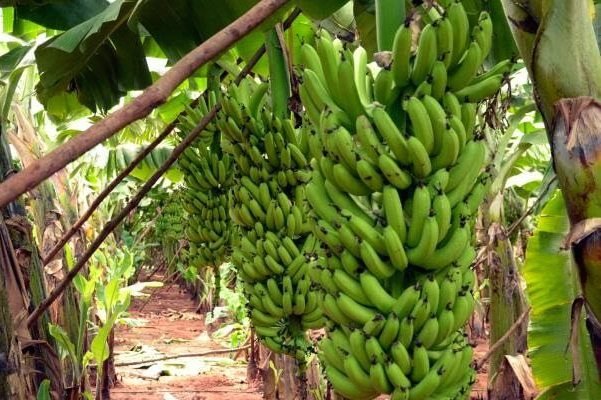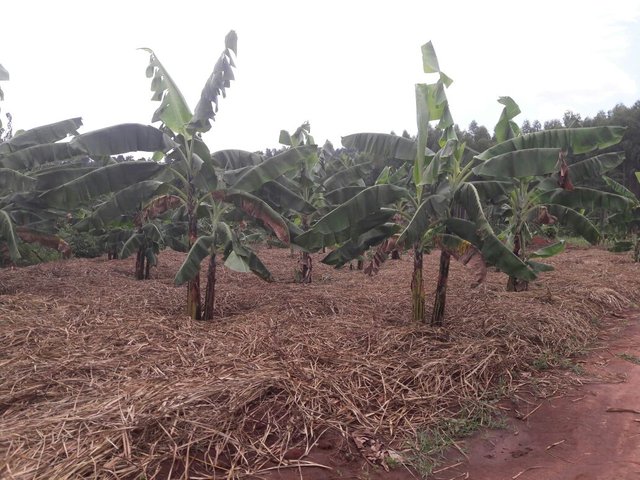LAND PREPARATION & CULTURAL PRACTICES OF BANANA (Musa acuminata)
Banana also known as Musa acuminata is a very common and popular fruit known by Africans and also round the world. It encompasses the following processes...
Land Preparation: Clearing of the land which is followed by stumping and maklng of ridges or heaps. It can also be done mechanically through ploughing, harrowing and ridging.
Varieties/Cultivars: Gross Michel; cavendish (dwarf); red banana; canary banana.
Climatic and soil requirements: Banana plant (Fig. 16.10) requires a temperature of 21°C-25C, rainfall of 150cm - 2OOcm per annum and a welldrained, rich, loamy soil.
Planting Materials: These are com (or bits), peeper suckers, sword sucker and maiden sucker.
Propagation/Planting Date: Banana is propagated by vegetative means any time from April to September. Dig a hole and plant the sucker with ball .of earth. The hole should be 60cm x 600m. The holes are filled with soil mixed with organic matter.
Spacing: 4mx4m
CULTURAL PRACTICES
(i) Weeding: This should be done regularly to preventcompetition with crops for nutrients.
(ii) Mulching: This should be done to prevent evaporation.
(iii) Fertilizer Application: Apply Muriate of potash 25kg/ha by ring method at regular intervals.
(iv) Pruning: This should be done to avoid over-population per stand.
(v) Pests and other insects should be controlled.
Maturity period: It matures between 12-18 months, depending on the variety.
Harvesting: A bunch of banana is harvested
when the fruit is severed from the bunch stalk by using cutlass. At times the pseudo-stem is cut until the tree falls. ’
Processing/Storage: Banana is either
eaten raw when ripe or can be processed into juice which is stored in cans. The ripe fruit can be stored temporarily in refrigerator.
PEST OF BANANA
(i) Stem Borer:The larvae of some insects bore into and destroy the tissue of the plant.
Control:
(i) Apply dieldrin dust or furadan.
(ii) Nematode: It makes the root of banana to grow galls or knots, leading to poor growth.
Control: Use appropriate nematicide.
(iii) Rats and Monkeys: These eat up the matured or ripe fruits.
Control:
(i) Use poison baits
(ii) Set traps.
(iii) Harvest ripe fruit early.
DISEASES OF BANANA
(I) Panama disease: It is caused by fungus (Fusarium oxysperum) which is spread through the soil. Symptoms include collapsing of the petiole and withering of the leaves.
Control:
(i) Use resistant varieties.
(ii) Spray with fungicide.
(2) Leaf spot (or Sigatoka) disease: it caused by a fungus (Cercospora mycosipharella) which is transmitted by air or wind.
Symptoms: include yellow or brown chlorotic spots which later unite to form or bind lateral to parallel vein.
Control: Spray with fungicrde, e.g. Bordeaux mixture.
(3) Bunchy top disease: It is caused by a virus transmitted by an insect.
Symptoms include stunted plant with crowded leaves having curled edges.
Control: (i) Ensure field sanitation



.jpg)
.jpg)
Pisang yang bagus dan besar 👍👌
Go here https://steemit.com/@a-a-a to get your post resteemed to over 72,000 followers.